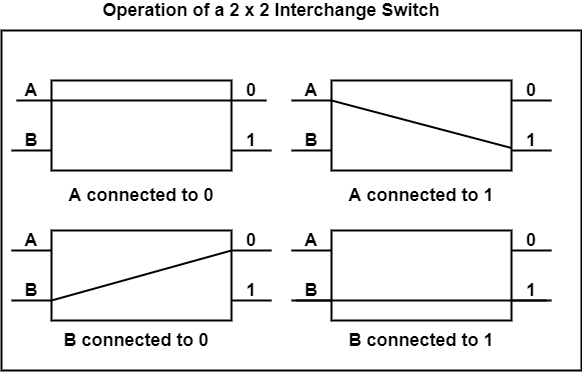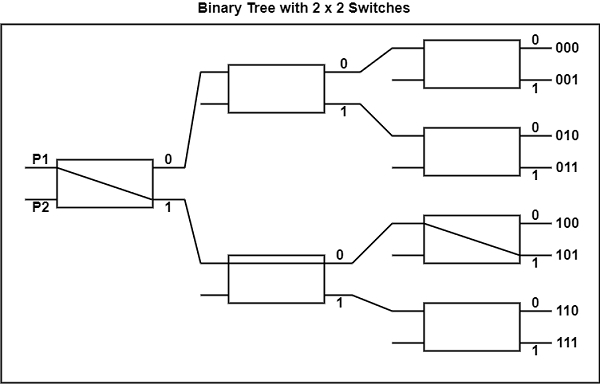
 Data Structure
Data Structure Networking
Networking RDBMS
RDBMS Operating System
Operating System Java
Java MS Excel
MS Excel iOS
iOS HTML
HTML CSS
CSS Android
Android Python
Python C Programming
C Programming C++
C++ C#
C# MongoDB
MongoDB MySQL
MySQL Javascript
Javascript PHP
PHPPhysics
Chemistry
Biology
Mathematics
English
Economics
Psychology
Social Studies
Fashion Studies
Legal Studies
- Selected Reading
- UPSC IAS Exams Notes
- Developer's Best Practices
- Questions and Answers
- Effective Resume Writing
- HR Interview Questions
- Computer Glossary
- Who is Who
What is Multistage Switching Network in Computer Architecture?
The basic element of a multistage network is a two-input, two-output interchange switch. As displayed in the figure, the 2 X 2 switch has two inputs labeled A and B, and two outputs labeled 0 and 1.

There are control signals related to the switch. The control signals start interconnection between the input and output terminals. The switch can join input A to either of the outputs. Terminal B of the switch facilitates similarly. The switch can also arbitrate between conflicting requests.
In case, inputs A and B request the same output terminals, it is possible that only one of the inputs is connected and the other is blocked. It is possible to start a multistage network to control the communication between multiple sources and destinations. The multistage network is established with the help of a 2 x 2 switch as a building block.
Consider the binary tree displayed in the figure to view how this is carried out.

The two processors P1 and P2 are connected through switches to eight memory modules labeled in binary, starting from 000 through 111. The direction beginning from source to destination is decided from the binary bits of the destination number.
The first bit of the destination number helps in denoting the first level’s switch output. The second bit identifies the second level’s switch output, and the third bit defines the third level’s switch output.

